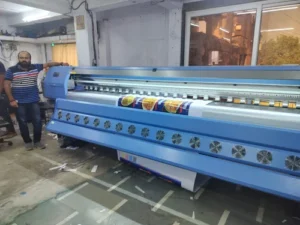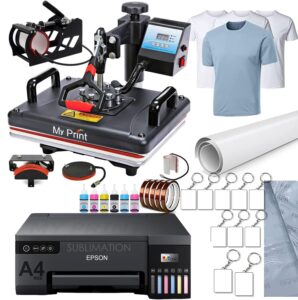Discover How Much T-Shirt Printing Costs: A Comprehensive Breakdown
T-shirt printing has become a popular method for individuals and businesses looking to express their unique style or promote their brand. However, a common question arises: “How much does t-shirt printing cost?”
Understanding the various factors that influence pricing is essential to making informed decisions, especially for bulk orders or custom designs. In this article, we will delve into the different aspects that affect t-shirt printing costs, as well as provide tips on how to optimize your custom orders for the best value.
Understanding the Basics of T-Shirt Printing Costs
When considering a t-shirt printing project, it’s crucial to grasp the basics of how pricing is structured. T-shirt printing costs are influenced by a multitude of factors, ranging from the type of printing method used to the fabric quality of the t-shirts themselves. Each choice you make can impact the final price, so it’s important to do your research and understand what to expect.
Importance of Knowing Printing Costs for Custom Orders
For businesses and individuals alike, knowing the costs associated with t-shirt printing helps in budgeting and planning. It allows for informed decisions about design options, quantity, and overall expenditure. This awareness can mean the difference between a successful promotional campaign and an unnecessary financial burden.
Factors Influencing T-Shirt Printing Costs
Quantity Ordered
One of the most significant factors that affect pricing is the quantity of t-shirts you plan to order. Generally, the more t-shirts you order, the lower the per-unit cost becomes. Bulk ordering typically qualifies you for discounts, helping you save money while meeting your printing needs.
Fabric Quality and Type
The type of fabric you choose for your t-shirts can substantially influence the overall cost. Higher quality fabrics, such as organic cotton or moisture-wicking polyester, tend to be more expensive. It’s essential to weigh the benefits of quality against your budget and intended use of the shirts.
Printing Technique
Different printing techniques come with varying costs. Below are common methods:
Screen Printing
Screen printing is a popular method for producing high-quality prints on t-shirts, especially for large orders. It involves creating a stencil (or screen) and using it to apply layers of ink. This method is cost-effective for bulk orders but may incur higher setup fees.
Vinyl Cut & Paste
Vinyl cut printing involves cutting designs from colored vinyl sheets and applying them to the fabric. This method is ideal for simple designs and small runs, offering durability and vibrant colors. However, it may not be suitable for intricate designs with multiple colors.
Embroidery
Embroidery is a technique where designs are stitched onto the fabric using thread. It is often used for logos and professional apparel due to its durability and upscale appearance. While it provides a high-quality finish, it is generally the most expensive printing method.
Sublimation
Sublimation printing is a process that uses heat to transfer dye onto materials, typically polyester fabrics. This method allows for full-color designs and is ideal for all-over prints. However, it works best on light-colored fabrics and may not be suitable for dark materials.
DTF (Direct to Film) Printing
DTF printing involves printing designs onto a special film, which is then transferred onto the fabric using heat. This method allows for vibrant colors and detailed designs on various fabric types, making it a versatile option for custom apparel.
DTG (Direct to Garment) Printing
Similar to DTF, this method focuses on direct printing onto the fabric, allowing for high-quality, full-color designs. It is suitable for both small and large runs, providing flexibility in design choices.
Complexity of Design
The complexity of your design can also influence the cost. Designs with multiple colors, intricate details, or specific placements may require additional setup time and materials, thus raising the final price.
Turnaround Time and Shipping Considerations
If you need your t-shirts quickly, some printing companies may charge a premium for expedited services. Additionally, consider shipping costs as they can vary depending on the provider and distance, impacting your overall budget.
Common Pricing Structures
Per-Unit Cost Analysis
Understanding how per-unit costs are calculated can help in planning your order. These costs often decrease with larger orders due to economies of scale.
Bulk Order Discounts
Many companies offer attractive discounts for bulk orders. It’s wise to compare different providers to find the best deal.
Setup Fees and Initial Charges
Be mindful of potential setup fees that might apply, especially for screen printing. These fees can add to your initial costs, so ensure to ask your provider about any additional charges.
Comparing Various Printing Methods in India
1. Screen Printing
- Cost: Ranges from ₹150 to ₹400 per shirt, depending on the order quantity and design complexity.
- Setup Fees: Usually involves a setup fee starting from ₹1,000 to ₹3,000 (can vary based on the number of colors).
- Best For: Large orders (typically 25 shirts and above) since it offers a lower per-unit cost at scale.
2. Sublimation
- Cost: Typically costs between ₹150 to ₹600 per shirt, primarily influenced by fabric choice (works best with polyester).
- Setup Fees: Minimal; generally, no significant setup fees unless specialized materials are used.
- Best For: All-over prints on light-colored polyester fabrics, vibrant and detailed designs.
3. Embroidery
- Cost: Costs generally range from ₹200 to ₹800 per item, influenced by stitch count and complexity.
- Setup Fees: May include a digitizing fee (₹500 to ₹2,000) for creating the embroidery file.
- Best For: Professional wear and logos requiring durability and a high-quality finish.
4. Vinyl Cut & Paste
- Cost: Typically costs between ₹150 to ₹400 per shirt, depending on complexity and design size.
- Setup Fees: Generally low; minimal setup fees as the process is straightforward.
- Best For: Small orders or custom designs, particularly effective for simple logos and names.
5. DTF (Direct to Film)
- Cost: Usually ranges from ₹200 to ₹500 per shirt; pricing may vary based on print details and film quality.
- Setup Fees: Minimal; costs primarily based on materials used.
- Best For: Versatile printing options on various fabric types, detailed designs allowed.
6. DTG (Direct to Garment)
- Best For: Short runs or highly detailed designs, ideal for intricate graphics and vibrant colors.
- Cost: Usually between ₹250 to ₹700 per shirt; prices are often higher for complex designs.
- Setup Fees: Minimal; fewer setup costs than screen printing, as it uses a digital printing process.
Tips to Reduce T-Shirt Printing Costs
Simplifying Design Choices
To save on costs, consider simplifying your design choices. Limiting color usage or opting for simpler graphics can significantly reduce printing expenses.
Optimizing Order Size
Order sizes should be carefully considered. If you don’t need a large quantity, explore small batch printing options to avoid overordering.
Choosing Cost-Effective Printing Methods
Selecting the most appropriate printing method based on your needs can help manage costs effectively. Research each option and consult with providers to find the best match for your project.
Conclusion
In conclusion, numerous factors influence the cost of t-shirt printing, including order quantity, fabric quality, printing methods, design complexity, and turnaround time. By understanding these elements, you can navigate the market more effectively and make choices that suit your budget.
Final Thoughts and Recommendations
When embarking on your t-shirt printing journey, take the time to evaluate your needs and budget meticulously. With the right knowledge and approach, you can achieve high-quality results without overspending.
Share this content:


Post Comment